
The Aromatic Gardenia Shrubs: Your Ultimate Guide to Growing Gardenias
Published: 25/04/2024 | Updated: 19/06/2024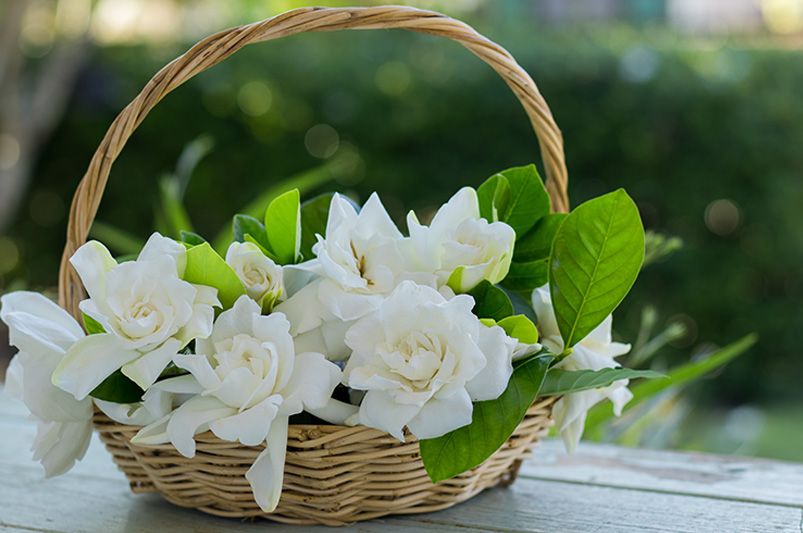
Are you searching for plants that are both visually appealing and have a delightful fragrance? Brace yourself for something extraordinary! Nature’s own air fresheners are the gardenia shrubs. These flowers, with their beautiful white blooms, will fill your garden or home with a sweet scent that everyone will love.


No need to worry about lack of space. Gardenias can thrive in compact spaces like gardens, balconies, or patios. They have the ability to make any place feel extra comfortable and have a delightful scent. With their incredible scent and stunning creamy-white blooms, they’ll transform your place into the go-to hangout spot.
Our guide will provide you with all the information you need about these exceptional gardenia shrubs and how to help them thrive in your specific location.
What Are Gardenia Shrubs?
The Gardenia group is responsible for these beautiful evergreen shrubs. Originally, they hail from the tropical areas of Asia and Africa.
Gardenias, classified as flowering shrubs, present a difficult yet satisfying choice for gardens, bringing both visual appeal and a pleasant aroma. Garden enthusiasts specifically take note of their blooming period and how well they thrive in warm climates, which is why they are highly favored.
Gardenias are perfect for adding a tropical touch to any space due to their affinity for warm weather and profusion of white flowers. Both inside and out, the leaves look fantastic with their shiny dark green hue. Gardenia flowers are a popular choice for brightening homes as natural decorations in vases or pots.
Types of Gardenias
There are loads of different gardenia plants out there, some of which are ‘cold hardy’, making them suitable for different climates, and each one is special with its own likes and personality with growing. Embark on a small adventure with me as we explore the top types of gardenia shrubs. ‘Potted plants’ allow gardeners with limited space to grow select gardenia varieties, offering flexibility.
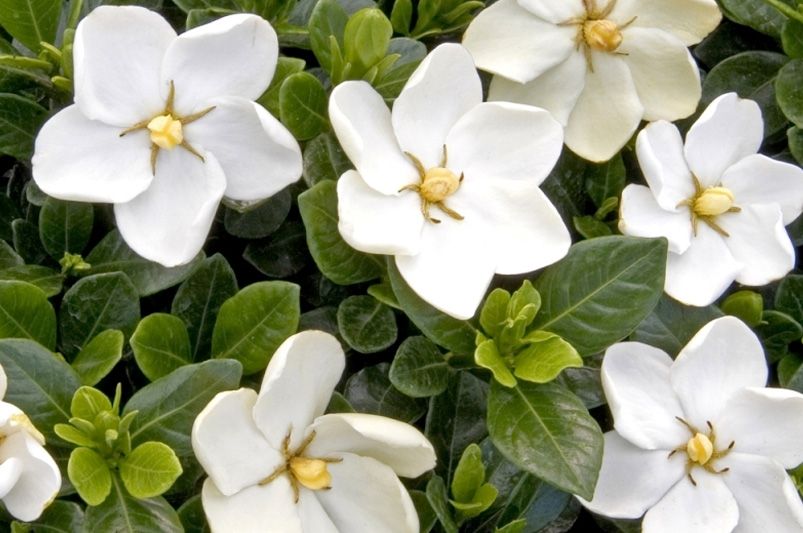
Daisy Gardenia
The Daisy gardenia is a compact shrub with beautiful white flowers and a delightful fragrance. Gardeners love this plant because of its elegant appearance and sweet-smelling flowers. The Daisy gardenia plant has glossy green leaves and white, star-shaped flowers. It blooms from late spring to summer and grows to a height of 3 to 4 feet. This plant thrives in outdoor gardens, patios, and balconies, creating a cozy and sweet-smelling atmosphere for your home. Whether you’re looking to add a touch of elegance to your garden or simply enjoy the sweet scent of gardenias, the Daisy Gardenia Plant is a wonderful choice that is sure to bring joy and beauty to any space.
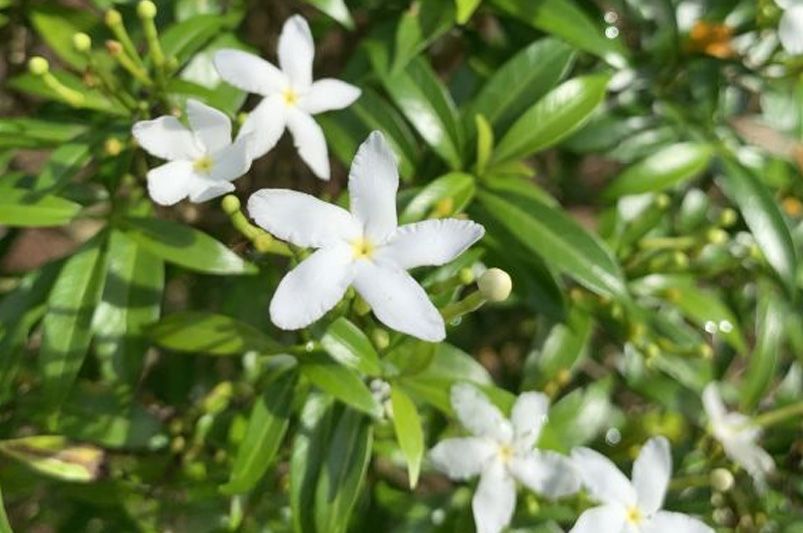
Dwarf Gardenia Radicans
The Dwarf Gardenia Radicans is a well-liked gardenia variety known for being easy to care for and compact. The plant has glossy green leaves and fragrant white flowers that can bloom for weeks. With a mature height of 1 to 3 feet and spread of 3-4 feet, this plant is perfect for groundcover, edging, or containers. This variety is a great choice for gardens in different climates due to its ability to withstand cold and drought. Well-suited for USDA hardiness zones 7 to 10, this plant thrives in warmer climates. Whether you’re basking in the coastal breeze or reveling in the southern sun, the Dwarf Gardenia Radicans is determined to captivate your senses and leave you spellbound.
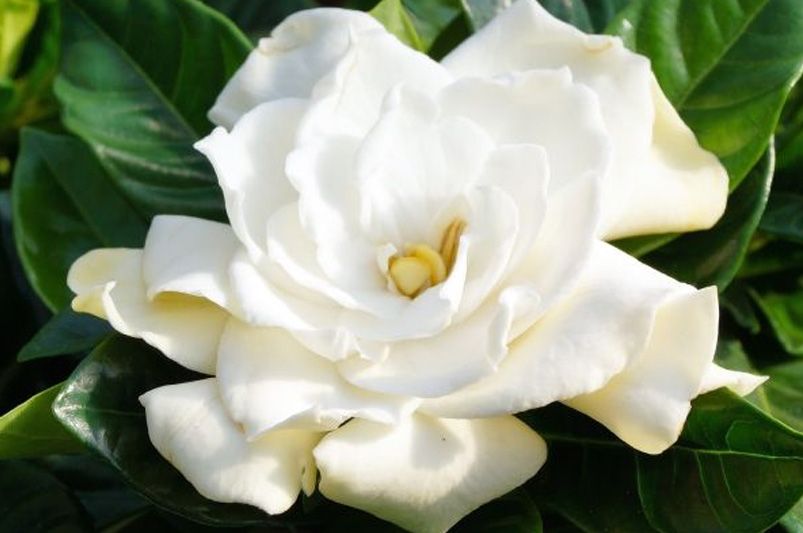
Everblooming Gardenia
The Everblooming Gardenia stands out for its unique trait of blooming all year long. While other gardenias may have sporadic blooms, the Ever-blooming variety consistently produces its stunning flowers, making sure that your garden is always filled with beauty and fragrance. The Everblooming Gardenia truly lives up to its name, allowing you to enjoy its enchanting presence no matter the season. For any garden or landscape, the Everblooming Gardenia is a superb choice due to its compactness and versatility, flourishing best in zones 8 through 10. Due to its compact and rounded growth, it only grows to a height of 2 to 3 feet, making it perfect for small gardens, containers, or as a short hedge. Its glossy, dark green leaves provide an attractive backdrop to the pristine white flowers, creating a beautiful contrast. Whether you plant it as a focal point, in a mixed border, or along a garden path, the Everblooming Gardenia will bring elegance and grace to any setting.
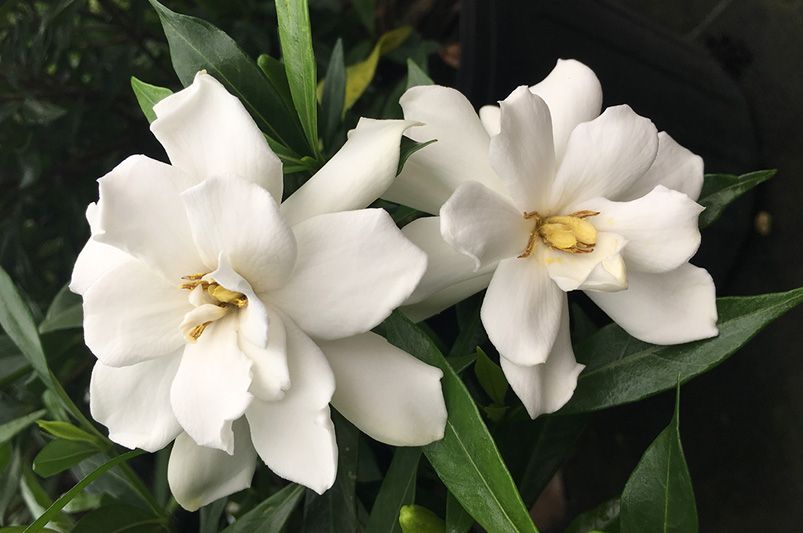
Frostproof Gardenia
Gardeners often choose the Frost Proof Gardenia to enhance the beauty of their landscape. The plant features beautiful double white flowers and glossy dark green leaves for a timeless and sophisticated appearance. As its name suggests, this variety is more resistant to cold weather than other gardenias and can tolerate temperatures as low as 0°F, making it a durable choice for Northern gardeners. Versatility is one of Frost Proof Gardenia’s many charms. Standing up to five feet tall and spreading three feet wide, its compact form allows it to reign supreme as a striking border or a magnificent hedgerow. Don’t limit your imagination - this garden jewel is equally at home in decorative containers, gracing patios and balconies with its divine presence.
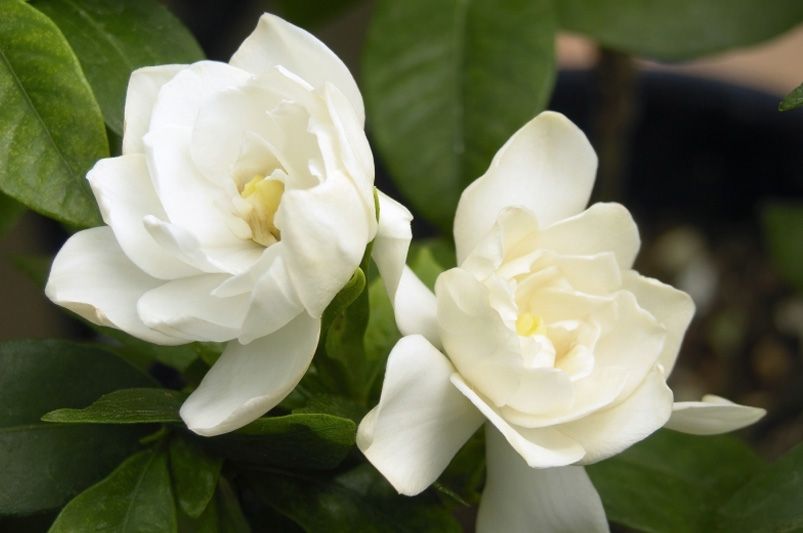
August Beauty Gardenia
The ‘August Beauty’ Gardenia flowers are creamy white and emit a sweet, captivating scent that fills the entire garden. They are excellent for cutting and incorporating into floral arrangements or simply appreciating in the garden. For optimal growth, it requires well-draining soil, acidity, and partial shade rather than full sun. Watering on a regular basis is crucial for keeping the soil moist, especially in hot summers. Due to its compact nature and rounded growth habit, Gardenia ‘August Beauty’ is a great option for borders, hedges, or as a standalone plant, with a mature height of 5 feet. Given adequate sunlight and humidity, it is possible to grow it indoors as a houseplant too. Gardenia ‘August Beauty’ is a low-maintenance plant that enhances beauty and fragrance in any garden or landscape.
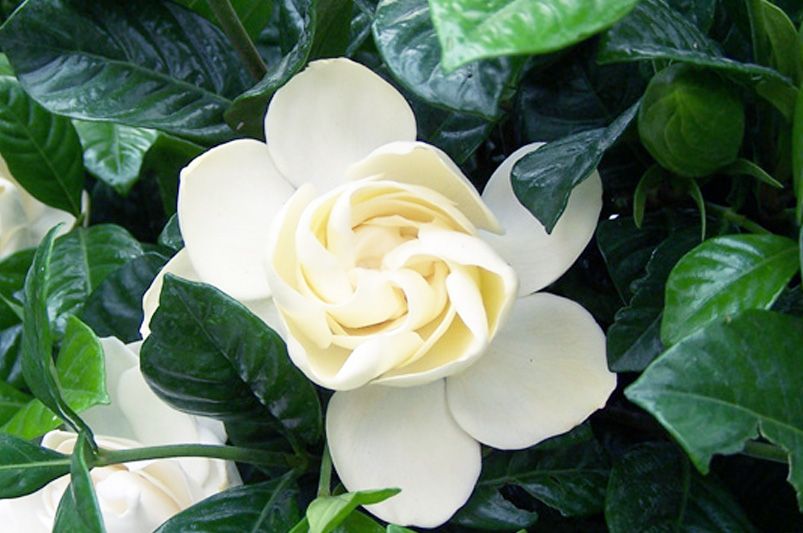
Buttons Gardenia
Gardenia ‘Buttons’ (Gardenia jasminoides Buttons) is widely chosen for gardens and landscapes because of its small size and abundant, fragrant flowers. With a height of only 1-2 feet, this dwarf gardenia is great for small gardens or planting in containers. The ‘Buttons’ gardenia plant produces many white, star-shaped flowers with a sweet, jasmine-like fragrance, enhancing the beauty and scent of any garden. For Gardenia ‘Buttons’ to do well, it needs bright, indirect sunlight. Make sure to put it in a spot that gets 4-6 hours of sunlight daily. Direct sunlight can cause damage to the delicate foliage of the plant, so it’s important to avoid it.
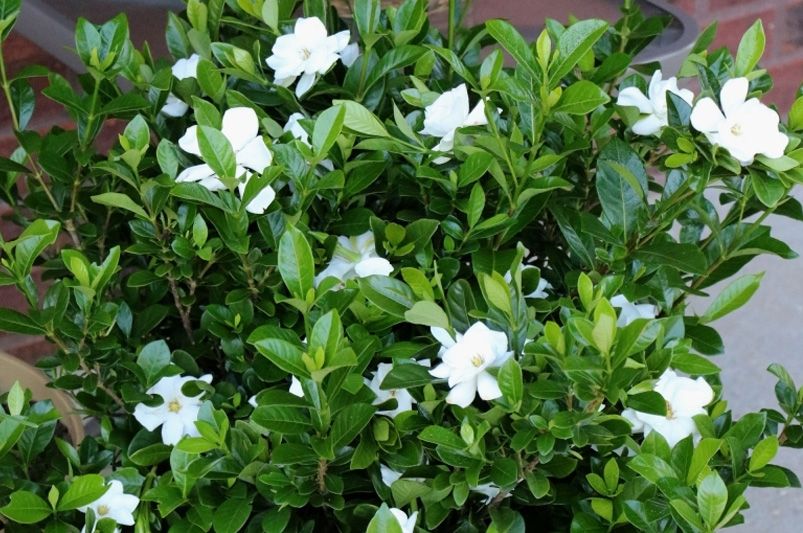
Radicans Gardenia
Gardenia ‘Radicans’ is the compact version of the Gardenia jasminoides, or cape jasmine, plant. This shrub is compact and evergreen, with small white flowers and glossy dark green leaves. For smaller gardens or containers, this variety is the best choice since it only grows up to 1 to 2 feet tall and spreads 2 to 3 feet wide. The plant grows slowly and blooms abundantly from late spring to summer, occasionally blooming throughout the year. To thrive, Gardenia ‘Radicans’ needs at least four to six hours of direct sunlight each day, but prefers filtered sunlight or partial shade. While they can withstand a moderate amount of morning sun, excessive, harsh afternoon sunlight can harm their delicate leaves and flowers.
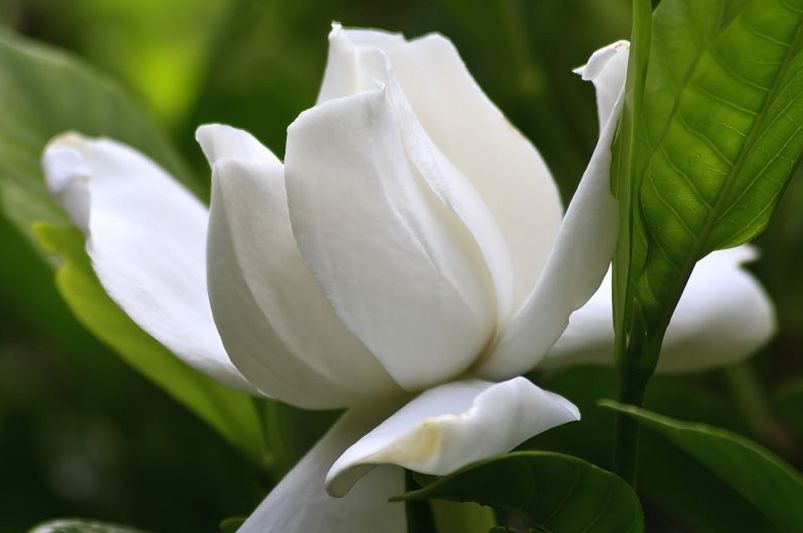
Coconut Magic Gardenia
Gardenia Coconut Magic is a gardenia Jasminoides variety that has a captivating coconut fragrance. The glossy green leaves of this fragrant shrub perfectly complement its beautiful white flowers. Enhance your garden or outdoor space with Gardenia Coconut Magic, a low-maintenance plant that adds a tropical vibe and delightful fragrance. With its compact and bushy growth, the Gardenia Coconut Magic is an ideal choice for gardens, patios, or indoor spaces, reaching a mature height of 3 to 4 feet.
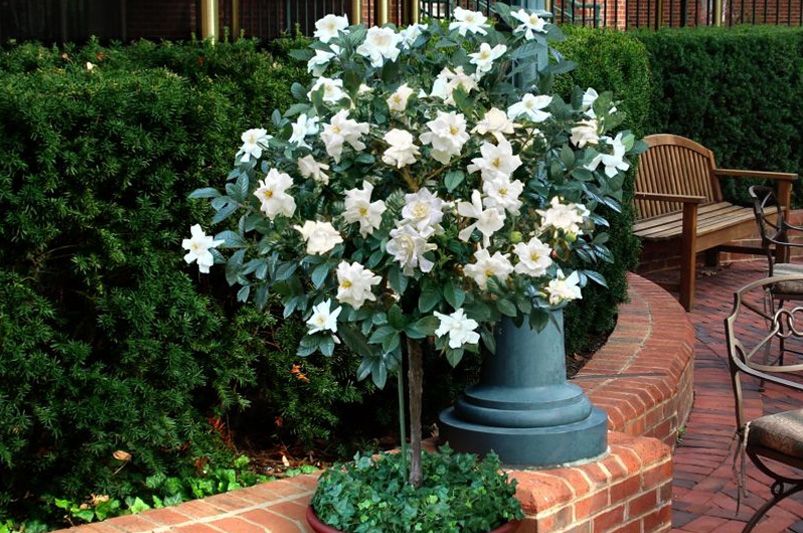
Aimee Gardenia Tree
Gardenia jasminoides Aimee, commonly called the Gardenia Tree, is a lovely evergreen shrub with fragrant white flowers. People are especially fond of this gardenia variety because it can be pruned into a tree-like form and is compact in size. The Gardenia Tree (Gardenia jasminoides Aimee) is a popular option for gardens and landscapes because of its stunning white flowers and glossy green leaves that emit a pleasant fragrance. The tree’s elegant and compact growth habit makes it suitable for containers or as a small tree. Gardenia jasminoides Aimee is a low-maintenance plant that brings elegance to outdoor spaces. For gardenia trees to flourish, they require full to partial sunlight and 4-6 hours of direct sunlight each day. To shield themselves from the scorching midday sun, they favor a spot with morning sunlight and afternoon shade.
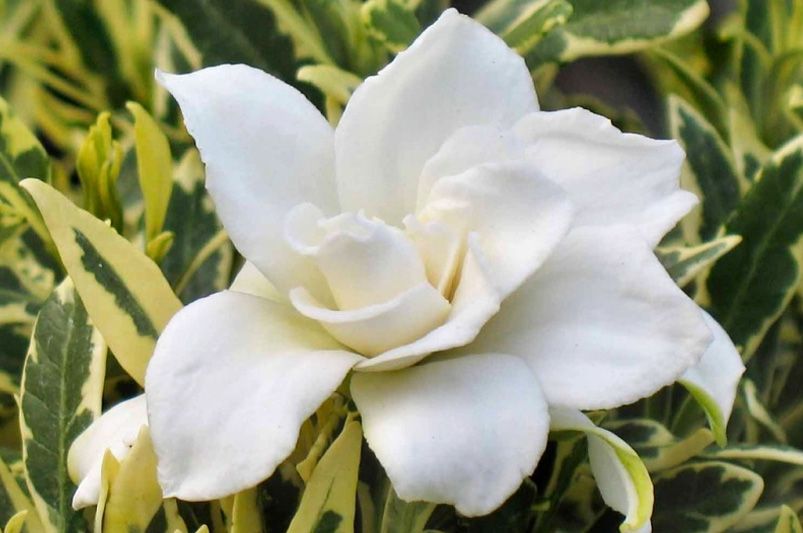
Variegated Radicans Gardenia
The Variegated Radicans Gardenia plant, also called Gardenia jasminoides Variegated Radicans, is an exceptional and distinctive option for gardens and landscapes. Enhance your garden with this compact, low-growing plant featuring glossy, oval-shaped leaves and creamy-white margins for a pop of color. The Variegated Radicans Gardenia plant is celebrated for its striking white blooms and captivating sweet aroma.
With its variegated flowers, the Radicans gardenia adds charm to outdoor spaces during spring and summer, while also attracting pollinators. This gardenia plant is low-maintenance - just ensure it has well-draining, acidic soil and gets a mix of shade and full sun. It grows well in USDA hardiness zones 8-11 and demands regular watering to maintain a consistently moist soil that is not overly saturated.
Where and When to Plant Gardenias?
Envision designing a snug corner in your garden, where the sun filters through to provide a gentle warmth, without being too intense. For those in sunnier climates, that’s the perfect location to grow gardenias. Gardenias, known for their delicate charm, flourish in full sun when properly cared for and love basking in its glow.
The key is to have the appropriate soil ready for them. For optimal growth, gardenias require acidic soil with a pH reminiscent of sugarless lemonade. Testing and adjusting your soil’s pH is vital for optimal growth conditions, with the ideal range being 5.0 to 6.5. To determine if your soil is suitable, you can conduct a specific test to determine its acidity level.
Spring and fall are the optimal seasons for planting gardenias. The gardenias thrive in these seasons, which are perfect—neither too hot nor too cold. Remember, they might not make it through due to the harsh conditions of strong winds and boiling weather. To promote the best growth, place gardenias in a spot with morning sunlight and afternoon shade to shield them from the strong midday sun.
Planting Steps for Gardenias
Whether you choose to plant gardenias outside or bring them indoors, you’ll find the process to be simple and rewarding. Time to delve into the necessary steps for ensuring the prosperity of your gardenias.
Begin by digging a hole that is larger than the root ball of the gardenia. Your plant will have lots of space to relax and adjust to its new environment. Take caution as you carefully position your gardenia in the hole, then slowly refill it with soil, ensuring a secure placement.
The key to giving your gardenia the best start is soil improvement. Adding organic matter, such as compost, can have amazing effects. Increasing soil acidity is beneficial for gardenias. To add a little something extra, top it off with a layer of pine straw. By acting as mulch, it maintains soil moisture and creates optimal conditions for your gardenias to thrive.
Adequate soil drainage is also a critical factor to consider. Gardenias prefer well-drained soil for optimal growth and happiness. By including plant food in the soil around your gardenia every month, you can supply vital nutrients that promote its growth and flowering.
When planting multiple gardenias in one area, allow them space for breathing and flourishing. Ensure there is a minimum of 5 feet of space between them. Ensuring good air circulation is crucial for the plants’ well-being, hence the need to prevent overcrowding.
Watering Gardenias
Follow these simple watering steps to ensure your gardenias thrive.
Consistently water your gardenias, aiming for once or twice a week. This assists them in getting settled and comfortable in their new location. Here’s a helpful tip: during their main growing season, make sure to keep the soil consistently moist. Picture providing your plants with a continuous drink to keep them fresh - they love moist soil!
Similar to how we dislike being in a bath for too long, gardenias also dislike constantly having wet roots. While you’re ensuring the soil stays wet, be vigilant for any puddles. Ensure you don’t drown your lovely green friends by giving them too much water.
When the sun gets hotter or the weather becomes drier, your gardenias will require extra care. During a heatwave or extended dry period, provide them with a generous amount of water. It’s like equipping them with a shield to withstand the hot weather and continue thriving.
Stay vigilant of the sky and the soil, and adapt your watering approach accordingly. Providing your gardenias with attention and care will result in beautiful blooms and healthy leaves as a token of gratitude.
Pruning Gardenias
Good news for those who dislike excessive trimming—gardenias are low-maintenance when it comes to pruning! Doing just a little bit can make a big difference in their healthy development.
To maintain the beauty of your gardenias, inspect the bush for tangled or rubbing branches, as well as straggly branches and faded flowers. Remove those carefully. Your gardenia can thrive and look amazing because this helps all the other branches receive the necessary light and air. Once the shrubs have stopped flowering in the summer, trimming them helps promote new growth and blossoms.
Here’s a bonus tip to make your gardenia bloom beautifully: when the flowers lose their shine and appear tired, it’s time to bid them farewell gently. All you need are your fingers, no tools necessary. Simply remove the old flowers gently, and you’re good to go. Your gardenias will become extremely thrilled and produce an abundance of flowers by following this technique.
Fertilizing Gardenias
Feeding is a vital step in ensuring the health and stunning blossoms of your gardenias. Make sure to fertilize them during spring and summer. Select a balanced fertilizer that is specifically formulated for acid-loving plants such as gardenias, as they greatly benefit from it.
The best outcome can be achieved by following the guidelines provided on the fertilizer label. Nonetheless, be mindful of not pushing yourself too hard.
Your task isn’t complete just yet, even after fertilization. Be vigilant in observing your gardenias for any signs of stress or damage. Keep a careful eye out for any problems that may arise, even after you’ve fed them, since they can be sensitive. This method allows you to appreciate those stunning blossoms for the entire duration of the season.
Growing Gardenias Indoors
Finding the ideal spot is crucial when bringing gardenias inside. Find a spot that receives gentle morning sunlight but won’t be too hot later in the day. Being constantly exposed to direct sunlight isn’t their preference, so a spot by a window with a mix of light and shade is ideal.
Don’t forget that gardenias are known for being delicate. Keep them away from air conditioners and open windows on windy days to avoid cold drafts, as they don’t like them. A moderate level of humidity is ideal for these plants, as they don’t thrive in excessively dry conditions.
What’s great about having gardenias indoors? You’ll receive an immediate bonus of their wonderful scent and the gorgeous sight of their blossoms, particularly during the evenings. It’s like adding a touch of the garden to your home for a brighter atmosphere.
Create your ideal garden design with the help of Shrubhub’s services.
Everyone desires a garden that remains beautiful and blooms throughout the year. Maintaining a landscape in optimal condition year-round is difficult. Plan your entire garden and receive professional advice for your plants and trees with Shrubhub’s services.
Let Shrubhub assist you in designing and visualizing your landscape with advanced 3D technology. Achieve your landscaping dreams with its comprehensive plant database and visualization tools!


